Application of the "ppm-mineralogy" technique for isotope dating and mineralogical study of ore deposits in mafic-ultramafic complexes based on minute accessory minerals
ABSTRACT: Dating of geological processes and stages of ore formation based on individual grains of accessory minerals by isotope geochemistry methods yields more detailed information which cannot be obtained by bulk rock or ore samples analysis. Extraction of minute accessory minerals-carriers of chemical elements suitable for isotope analysis, at their concentration in rocks less than n*0.01 - n*0.1 ppm represents a special problem, that predetermines the success of subsequent isotope analysis.
Introduction
The contents of chemical elements used for studies based on U-Pb and Re-Os isotope systems, in rocks of various mafic-ultramafic complexes are usually quite low: less than n*0.01ppm in barren ultramafic rocks and less n*0.1ppm in pyroxenites, norites and gabbros. This note relates to the low contents of minerals-carriers of these elements (e.g. zircon, baddeleyite, uraninite, minerals of Os, U, Th-monazite and apatite (REE)). Usually these minerals are rare accessories whose grain size does not exceed 70-80µm. Meanwhile, extraction of these minerals from mafic and ultramafic rocks allows to apply isotope measurement in individual grains in situ (SIMS, SHRIMP) or high-sensitivity measurements of isotope ratios and element contents (REE, for example) in the solutions obtained by chemical decomposition of single grains.
Mineralogy
The "ppm-mineralogy" technique is an approach to high sensitive mineralogical works, based on appropriate metrological maintenance (V. Knauf, 1996) allowing to extract and study the heavy minerals and especially the mineral-carriers of gold and platinum group elements (PGE) at their content in rock less than 1 ppm (see details section Technologies, "ppm-mineralogy”).
This technique was applied to gold grains extraction during the study of till samples (<50µm) from Finland (V. Knauf et al., 2000) and Kola region of Russia with mineralogical sensitivity less than 0.2 ppb of Au. Detection of the complete mineral associations for all six PGE in Kraubath ultramafic massif is another application of the "ppm-mineralogy" technology (K. Malitch et al., 2003). Mineralogical research of the PGE mineralization in various dunite-clinopyroxenite zonal complexes revealed the primary and secondary PGM associations (O. Knauf, 2005). Investigation of the sulfide concentrates obtained by "ppm-mineralogy" technique led to discovery of the new rhenium mineral – tarkianite (K. Kojonen et al., 2004).
The "ppm-mineralogy" technique has been adapted to extraction of fine grains of rare accessory minerals for subsequent isotope researches. As an example of one sample processing there are from 30 to 50 units of intermediate products, including mineral concentrates of various granulometric fractions (Fig. 1a).
|
Fig. 1a.
 |
For coarse fractions of concentrates (>50µm) it is possible to apply optical diagnostics of minerals, manual extraction of grains (fig. 1, b,c) and mounting of grains on a carbon stage (fig. 1, d) for subsequent checking under scanning electron microscope with ED spectrometer (SEM+EDS).
|
Fig. 1b, c, d.
|
||
 b
|
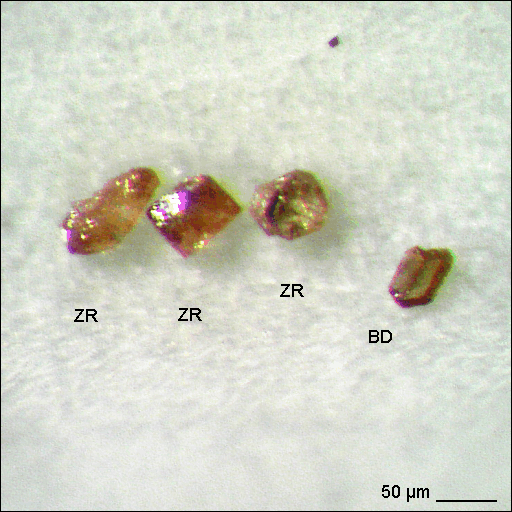 c
|
 d
|
|
Pl – plagioclase, Px-pyroxene, Slf-sulfides, ZR-zircon, BD-baddeleyite
|
||
For grains less than 50µm and for larger mineral grains whose optical diagnostics are not reliable all the material of the concentrate (1-20mg) is mounted on a carbon stage for SEM+EDS examination (fig. 2, a, b, c).
|
Fig. 2a, b, c.
|
||
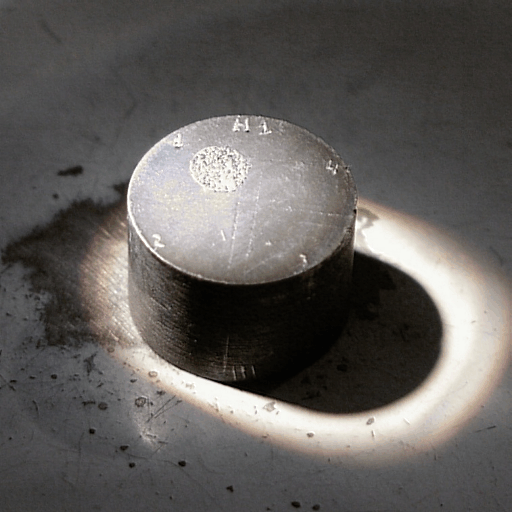 a
|
 b
|
 c
|
In this case, the diagnostics of minerals runs under the control of the specially developed electronic device connected to SEM together with the computer program for image processing ImSca 14 (Fig. 2d).
|
Fig. 2d.
 |
All the mineral grains mapped on a BSE-image of the scanned area are grouped according to brightness which is proportional to average atomic number of minerals and each group is given the certain brightness range (different colors). The program operates the electron beam and positions it on grains of each brightness range, carries out diagnostics of the mineral by chemical composition (by X-ray spectrum), codes the mineral and adds its coordinates to the table (fig. 2, d).
The BSE images and coordinates of grains allow identification of grains on the SEM specimen (using optics), facilitating isotope analysis.
In addition to extraction of single grains of accessory minerals it is possible to separate rock-forming minerals from intermediate products for Sm-Nd, Rb-Sr isotopic studies, sulfide concentrates (isotopy of S), Cr-spinel concentrates (isotopy of noble gases) and heavy concentrates for study of platinum group minerals (Fig. 3h-l).
BSE images of grains, extracted after optical or SEM+EDS diagnostics are shown on Fig. 3.
|
Fig. 3a-l.
|
|||
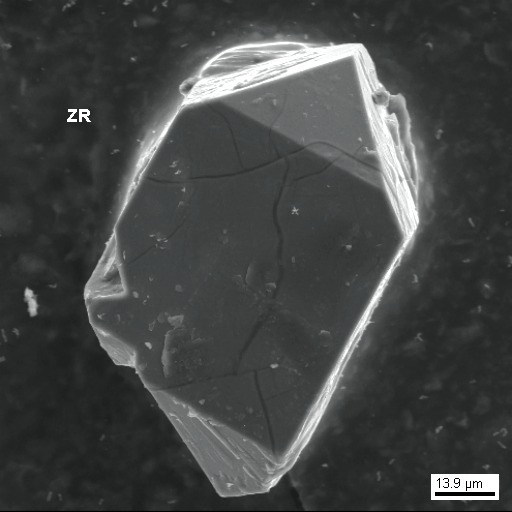 a
|
 b
|
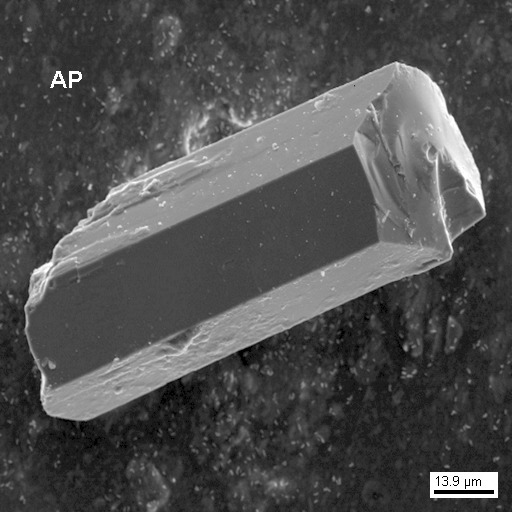 c
|
 d
|
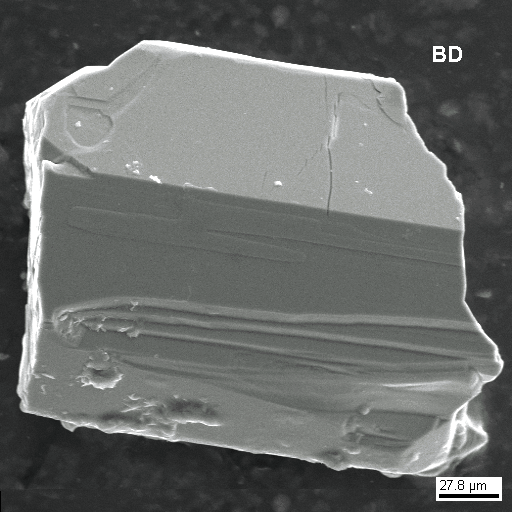 e
|
 f
|
 g
|
 h
|
 i
|
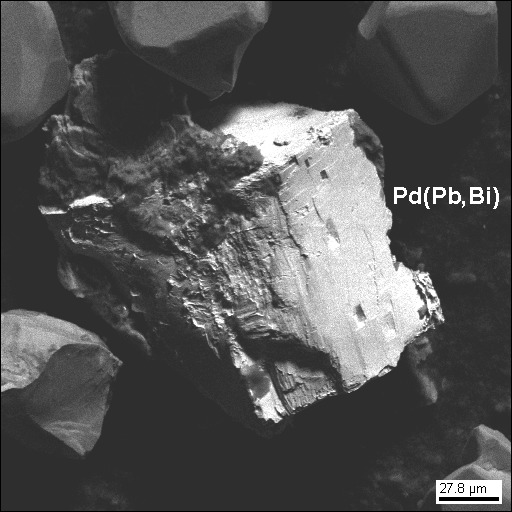 k
|
 l
|
ZR-zircon, AP-apatite, BD-baddeleyite, MN-monazite, SPR-sperrylite, CO-cooperite, VYS-vysotskite, PN-pentlandite, PY-pyrite, ILM-ilmenite.
|
For single grains of zircon, - there are many reasons to provide more detailed optical and cathode-luminescence study before isotope research starts (fig. 4, transmitted light).
Many zircon grains are not homogenous and consist of an inner core and one or more zonal rims.
Dating of core and rims separately inside one zircon grain may provide very different age: up to 100MA.
|
Fig. 4.
|
||
 |
 |
 |
Concluding remarks
The main advantage of the approach described above is the possibility of obtaining the complete isotope data for mafic-ultramafic rocks and connected ore deposits. High sensitivity of the mineral processing technique allows the use of relatively small volumes of initial samples (parts of drill core, for example) to get geochemical, isotopic and mineralogical data.
References
- Knauf V.V. (1996) The metrological maintenance of mineralogical investigations. Proceedings of the Russian Mineralogical Society Pt CXXV, N6, pp109-113 (in Russian).
- Кnauf O.V. (2005). The sparse platinum group minerals (PGM) in dunite and clinopyroxenite rocks of zonal complexes Ural type (Kytlym and Galmoenan massifs, Russia). Platinum-Group Elements – from Genesis to Beneficiation and Environmental Impact. Extended abstracts of 10th international platinum symposium. Oulu, Finland, pp400-403.
- Knauf V., Sandberg E., Sokolov P., Tabuns E. (2000). Gold geochemistry and mineralogy of till fines: a new approach for data integration. Bulletin of the Geological Society of Finland, 72, Parts 1-2, pp57-69.
- Kojonen K.K., Roberts A.C., Isomaki O.P., Knauf V.V., Johanson B., Pakkanen L. (2004). Tarkianite, (Cu,Fe)(Re,Mo)4S8, a new mineral species from the Hitura mine, Nivala, Finland. The Canadian Mineralogist, V42, N2, pp539-544.
- Malitch K.N., Thalhammer O.A., Knauf V.V., Melcher F. (2003). Diversity of platinum-group mineral assemblages in banded and podiform chromitite from the Kraubath ultramafic massif, Austria: evidence for an ophiolitic transition zone? Mineralium Deposita, V38, N3, pp282-297.
